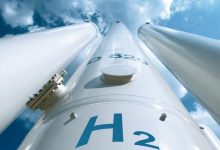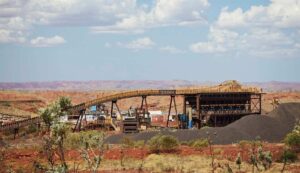Mining industry majors Anglo American, BHP, Fortescue and Hatch have joined forces to “de-risk and accelerate” the production of renewable hydrogen, as the resources sector works to decarbonise operations.
In a joint announcement on Wednesday, the companies said the new consortium’s main goal was to help to eliminate the obstacles to the adoption of green hydrogen technologies and encourage innovative applications.
“The goal is to identify opportunities to develop green hydrogen technologies for the resources sector and other heavy industries,” a statement said.
The consortium would also provide a mechanism for suppliers and operators to contribute to and engage with a range of development activities, including research, technology, supply chain development, and piloting green hydrogen technologies.
A fact sheet accompanying the announcement described green hydrogen as produced using electrolysis powered by renewable energy, as opposed to traditional carbon-intensive production methods used to split water molecules into hydrogen and oxygen.
But the fact sheet also noted that the member companies of the Green Hydrogen Consortium were “technology agnostic” and considering a range of options to progress decarbonisation of their operational greenhouse gas emissions.
“At this stage, green hydrogen is costly, technically challenging and can be hazardous,” the fact sheet says.
“As a Consortium, the group of heavy industry participants hope to reduce costs and increase technical capabilities through scale and shared learnings.
“Hydrogen’s many different applications make it an ideal technology to collaborate on and, through collaboration and innovation, the group hopes to accelerate cost reductions and technology readiness of green hydrogen and work through some of the current challenges to try to solve or eliminate them.”
The companies say some of the Consortium members are considering producing green hydrogen onsite, while others are more likely to source it from a provider.
The pursuit of green hydrogen is rapidly gaining momentum around the world and Australia, with a recent report from McKinsey foreshadowing the “decade of hydrogen” and predicting costs of production could halve over the next 10 years.
“2020 marks the beginning of a new era for energy: as the potential for hydrogen to become part of our global energy system becomes a reality, we can expect fewer emissions and improved security and flexibility,” CEO of Air Liquide and Co-chair of the Hydrogen Council Benoît Potier said.
“A clean energy future with hydrogen is closer than we think, because the industry has been working hard on addressing key technology challenges. This report shows the path forward to scale-up to fully achieve hydrogen competitiveness and deliver the decarbonisation we urgently need.”
In Japan, the Fukushima Hydrogen Energy Research Field (FH2R) project was this month completed by Toshiba Energy Systems & Solutions Corporation, powered by a 20MW solar farm and some power from the grid.
It was the fourth green hydrogen project to be announced this year alone, following the January unveiling of a green hydrogen project in the port area of Ostend, Belgium, to be developed by Port of Oostende, offshore engineer DEME Concessions, and financier PMV.
In late February, the British government committed £7.5 million to fund the next phase of Gigastack, a new project which will use electricity generated from the world’s largest offshore wind farm to produce renewable hydrogen.
And locally, the Queensland region of Gladstone was announced as the host of a new green hydrogen production hub.
The new Australian Consortium would be based in W.A., and has been welcomed by the state government there.
“We welcome this industry collaboration to help decarbonise mining operations and cement WA’s place on the world stage as a green hydrogen innovator and producer,” said the minister for regional development Alannah MacTiernan.
“Green hydrogen provides a real opportunity to reduce diesel consumption and decarbonise mine site operations, with potential for fuel cells to power fixed and mobile plants, mining vehicles and feedstock,” she said.
BHP and Fortescue had already made heavy commitments to lift the amount of renewables in their energy mix. BHP has chosen to go 100 per cent renewables, and cancel long term coal-fired generation contracts, to power its two big copper projects in Chile, while Fortescue has turned to solar and battery storage to help power its major iron ore mines in the Pilbara.










